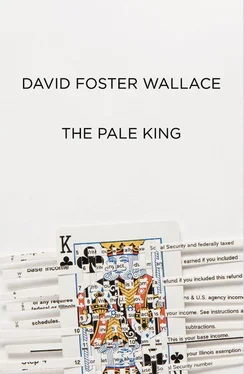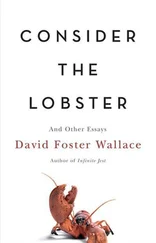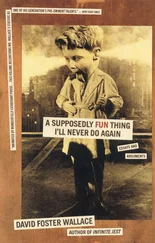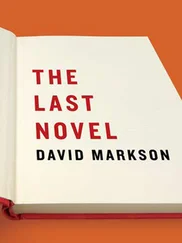David Wallace - The Pale King - An Unfinished Novel
Здесь есть возможность читать онлайн «David Wallace - The Pale King - An Unfinished Novel» весь текст электронной книги совершенно бесплатно (целиком полную версию без сокращений). В некоторых случаях можно слушать аудио, скачать через торрент в формате fb2 и присутствует краткое содержание. Год выпуска: 2011, Издательство: Little, Brown & Company, Жанр: Современная проза, на английском языке. Описание произведения, (предисловие) а так же отзывы посетителей доступны на портале библиотеки ЛибКат.
- Название:The Pale King: An Unfinished Novel
- Автор:
- Издательство:Little, Brown & Company
- Жанр:
- Год:2011
- ISBN:нет данных
- Рейтинг книги:3 / 5. Голосов: 1
-
Избранное:Добавить в избранное
- Отзывы:
-
Ваша оценка:
- 60
- 1
- 2
- 3
- 4
- 5
The Pale King: An Unfinished Novel: краткое содержание, описание и аннотация
Предлагаем к чтению аннотацию, описание, краткое содержание или предисловие (зависит от того, что написал сам автор книги «The Pale King: An Unfinished Novel»). Если вы не нашли необходимую информацию о книге — напишите в комментариях, мы постараемся отыскать её.
The Pale King
The Pale King: An Unfinished Novel — читать онлайн бесплатно полную книгу (весь текст) целиком
Ниже представлен текст книги, разбитый по страницам. Система сохранения места последней прочитанной страницы, позволяет с удобством читать онлайн бесплатно книгу «The Pale King: An Unfinished Novel», без необходимости каждый раз заново искать на чём Вы остановились. Поставьте закладку, и сможете в любой момент перейти на страницу, на которой закончили чтение.
Интервал:
Закладка:
Set amid the dazzling paralysis of the Chicago Loop, the IRS recruiting station was not, at first blush, a very dramatic or compelling-looking place. There was also a US Air Force recruiting office in the same storefront, separated from the IRS’s space only by a large polyvinyl screen or shield, and the fact that the USAF office played an orchestral version of the familiar ‘Off we go into the wild blue yonder’ musical theme over and over again on a repeating track in its reception area may well have had something to do with the IRS recruiter’s problem with his head and face, which were prone to small spastic jerks and grimaces at various times, and was, at first, difficult not to stare at and to act casual in the presence of. This Service recruiter, who appeared unshaven and had a cowlick that seemed to comprise almost the whole right side of his head, also wore his sunglasses indoors, and had an involved stain on one lapel of his suit jacket, and his necktie — unless my eyes had not yet adjusted from the brilliant dazzle of floundering southwest through fallen snow all the way from the Buckingham Fountain bus stop in Grant Park — might have been an actual clip-on. On the other hand, I had melted snow up to my groin, and frozen birdseed on my down coat, as well as two different winter-weight turtlenecks on beneath that, and probably did not look very promising either. (There was obviously no way that I was going to wear any of my new Carson’s business apparel to clamber through chest-high snowdrifts.) Besides the distracting martial music from across the screen, the IRS recruiting station itself was overheated, and smelled of sour coffee and a brand of stick-style deodorant which I couldn’t place. Several empty Nesbitt’s soda cans were arranged atop an overfull wastebasket, around which a litter of balled-up papers suggested idle hours of trying to throw balled-up papers into it — a pastime I knew well from ‘studying’ at the UIC library on the evenings when the podiatrist’s sign’s foot had so ruled. I also remember an open box of doughnuts whose glaze had gone unappetizingly dull.
Nevertheless, I wasn’t here to judge anything, nor to make hasty commitments. I was here to try to verify the seemingly almost incredible incentives for entering the Service that had been detailed by the advertisement I’d either heard or perhaps seen two days prior. It eventually emerged that the recruiter had been on duty without relief for several days because of the storm, which was probably the reason for his condition — the Service’s standards for personal appearance on-post are normally fairly stringent. When one of the city’s large, makeshift plows came by, the noise shook the storefront’s window, which faced south and was untinted — forming another possible explanation for the recruiter’s sunglasses, which I still found disconcerting. The recruiter’s desk was flanked by flags and a large easel with institutional charts and advertisements on large pieces of posterboard, and hanging slightly askew on the wall above and behind the desk was a framed print of the Internal Revenue Service seal, which, the recruiter explained, depicted the mythic hero Bellerophon slaying the Chimera, as well as the Latin motto on a long furling banner along the bottom, ‘Alicui tamen faciendum est,’ which essentially means ‘He is the one doing a difficult, unpopular job.’ It turned out that, for reasons dating all the way back to the permanent institution of a federal income tax in 1913, Bellerophon was the Service’s official symbol or figure, rather the way the bald eagle is the United States as a whole’s.
In return for a commitment of two to four years, depending on the specific incentive scheme, the Internal Revenue Service was offering up to a total of $14,450 for college or continuing technical education. That was, of course, $14,450 before applicable taxes, I remember the IRS recruiter stipulating with a smile I did not, at that point, know how to interpret. Also, by an elaborate arrangement which the recruiter highlighted for me on a fold-out document that outlined all the Service’s various incentive schedules in complex diagrams with dotted lines and extremely small type, if the continuing education led to either a CPA license or a master’s degree in the accounting or tax fields from an accredited institution, there were several grades of further inducements to extend one’s employee contract with the IRS, including an option to attend classes while posted at either a Regional Service Center or Regional Examination Center, to which the recruiter explained that newer Service personnel were commonly posted for their first several quarters after what the recruiter called ‘T and A.’ In order to qualify for the incentive package, one had to complete the twelve-week course at an IRS Training and Assessment Center, or TAC, which is what the recruiter’s rather cynical ‘T and A’ also stood for. Also, employees nearly always refer to the IRS as ‘the Service,’ and the site at which one works as their IRS ‘Post,’ and they measure time of employment not in years or months but in terms of the Service calendar’s four fiscal quarters, which correspond to the legal deadlines for mailing quarterly estimated tax, or 1040-EST, payments, the only unusual thing about which is that the second quarter runs from 15 April to 15 June, or only two months, and the fourth extends from 15 September to 15 January of the successive year — this is mainly so that the final quarter can comprise the entire taxable year through 31 December. The recruiter explained none of this in so many words at the time — much of it is just the sort of special institutional info one absorbs over time in an adult career.
Anyhow, by this time there were also two other would-be recruits in the office, one of whom I only remember as having a brightly colored one-piece snowsuit and a somewhat low, bulging forehead. The other, older man, though, had masking or duct tape holding his battered sneakers’ soles on, and was shivering in a way that seemed to have nothing to do with temperature, and impressed me as quite probably an indigent or street person rather than a bona fide candidate for recruitment. I was trying to concentrate and study the incentive-schedule handout in my hand throughout the recruiter’s more formal introductory presentation, and as a result, I know I failed to catch certain key details. Also, though, those details were sometimes actually drowned out by the cymbals and timpanis of the Air Force theme’s crescendo portion on the screen’s other side. We three, the recruiting presentation’s audience, were in folding metal chairs arranged before his desk, which the recruiter initially stood to the side of, beside his display easel — I remember that the man with the low forehead had reversed his chair and was seated leaning forward with his hands on the chair’s back and his chin atop his knuckles, whereas the third member of our audience was eating a doughnut after placing several others in side pockets of his khaki army coat. I remember the Service recruiter continually referred to an elaborate color chart or diagram that depicted the administrative structure and organization of the IRS. The depiction covered more than one chart, actually, and the recruiter — who sneezed several times without covering his nose or even averting his head, and also had more of the tiny neurological tic- or spasm-events at certain points in the unavoidably overheard ‘Off we go…’ —had to keep pulling different sections of posterboard to the front of the easel, and the whole thing was so complicated, and consisted of so many branches, sub-branches, divisions, and coordinating offices and sub-offices, as well as parallel or bilateral sub-offices and technology support divisions, that it appeared impossible to comprehend even the general sense of well enough to take a real interest in, though I obviously made it a conscious point to look as attentive and engaged as possible, if only to show that I was someone who could be trained to herd and process large amounts of info. At that juncture, I was obviously unaware that initial diagnostic screening of possible recruits was already under way, and that the excessive complexity and minutiae of the recruiter’s presentation represented part of a psychological ‘dispositional assessment’ mechanism in use by the IRS’s Personnel Division since 1967. Nor did I understand, when the other potential recruit (meaning the one who wasn’t obviously just looking for a warm place off the street) began nodding off over his chair’s back at the abstruseness of the presentation, that he had effectively eliminated himself as a candidate for all but the lowest-level IRS postings. Also, there were upwards of twenty different forms to fill out, many of which were redundant — it wasn’t clear to me why one couldn’t simply fill out one copy and then xerox a number of duplicates, but I again chose to keep my own counsel and simply fill out the same essential info over and over again.
Читать дальшеИнтервал:
Закладка:
Похожие книги на «The Pale King: An Unfinished Novel»
Представляем Вашему вниманию похожие книги на «The Pale King: An Unfinished Novel» списком для выбора. Мы отобрали схожую по названию и смыслу литературу в надежде предоставить читателям больше вариантов отыскать новые, интересные, ещё непрочитанные произведения.
Обсуждение, отзывы о книге «The Pale King: An Unfinished Novel» и просто собственные мнения читателей. Оставьте ваши комментарии, напишите, что Вы думаете о произведении, его смысле или главных героях. Укажите что конкретно понравилось, а что нет, и почему Вы так считаете.












